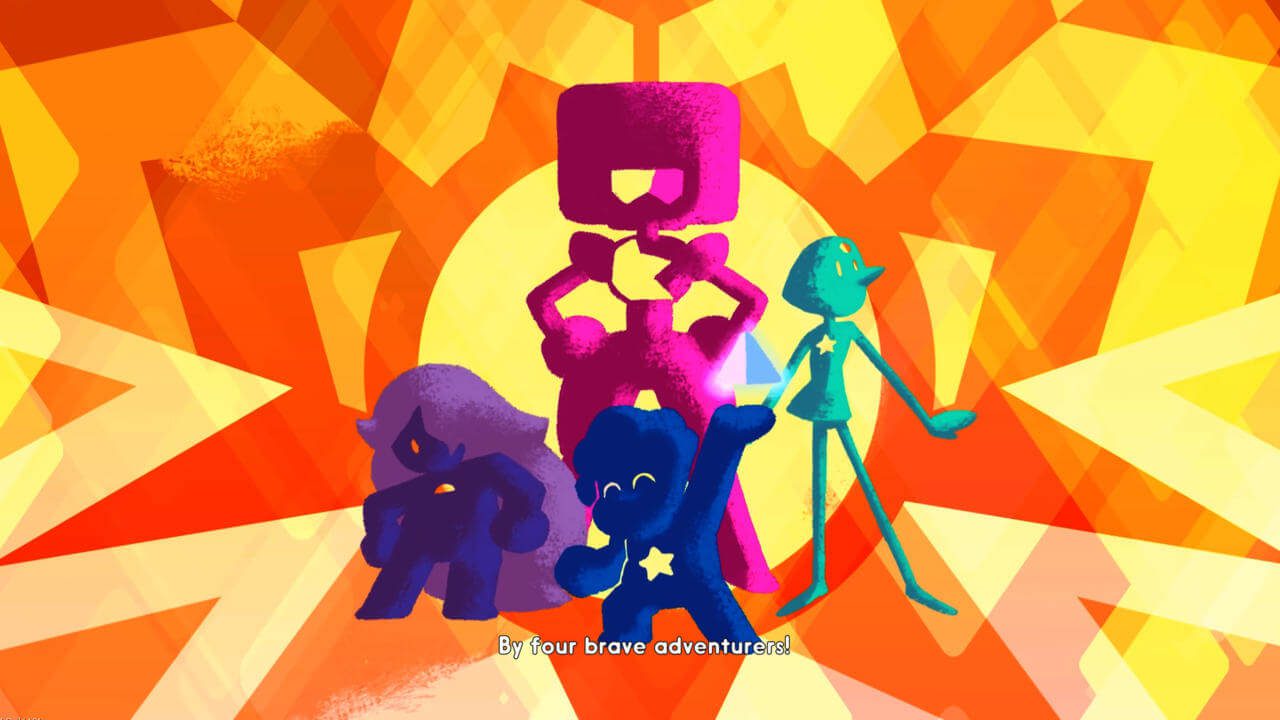The Steven Universe cartoon is a conceptual gold mine, and an RPG may be the perfect kind of game to showcase its bubbly and feisty superhero personalities. Following its 2015 mobile RPG (Steven Universe: Attack The Light), developer Grumpyface successfully captures much of what makes the show special in Steven Universe: Save the Light. Though somewhat tragically, the otherwise lovable adventure is regularly disrupted by underlying technical issues.
For most of the game, it’s just Steven and up to three of his besties getting into some relatively standard RPG shenanigans. You explore the environment, pick up loot where you find it, run into wandering enemies, and take them on in active-time turn-based combat. Like its predecessor, Save the Light is an RPG from the Paper Mario school of game design. Combat emphasizes contextual button presses, where hitting your mark does extra damage, defends against attacks, or adds effects. This comes with the minor-but-nifty twist that characters don’t necessarily have to act when their turn comes around, but can instead bank Star Points for more expensive abilities in future turns. Strategy comes down to determining how best to dismantle an enemy, not necessarily whose turn it is.
The vibrant cardboard cutout art style manages to admirably convey the spirit of the show without being an exact copy. One area, the Strawberry Battlefield, is particularly stunning, with warm green natural beauty and plump fruit engulfing the still-discernible remains of deadly weaponry and wartime detritus. The game’s fixed camera angles give you a good look at the expansive environments; however, the camera often has trouble adjusting as your party moves around the map, and sometimes the camera doesn’t follow you at all.











The character animations are also a source of joy, with every little action conveying a ton of personality. Peridot doing a fiddly Super Mario Bros. 2-esque Luigi jump is one of those little treats that constantly makes you smile. The music follows suit: While the number of tracks is limited, the tunes themselves are pretty well in line with the show’s 8-bit sounds, with gentle synth pop. Even here, the glitches rear their ugly head, with music from the overworld frequently continuing to play when you open the menu screen, leading to a dissonant overlap between tracks.
Traversing the environment presents the most debilitating problem of the game, which lies with the AI. All four of your party members are onscreen at once, and it’s all too easy for characters to get stuck behind objects, seemingly forgetting that they have the ability to jump and could use it to regain freedom. To make the situation worse, the game doesn’t auto-teleport lost characters to your location when a battle starts, so getting into an encounter with a glitched-out party means that the battle starts with only one character, or sometimes not at all (which can only be fixed by quitting and restarting the area). Latter portions of the game are extremely puzzle- and platforming-heavy, which exacerbates the problem.
Still, the game almost makes up for it by staying staunchly true to its source material, as far as the fine details go. Fry bits and donuts restore health; Together Breakfasts heal the entire party; you can use Bismuth’s forge to upgrade weapons; Onion sells goods in hidden areas of every stage, like the shady little criminal that he is.










But where the show’s personality really shines through is in the character progression: While leveling up gives characters a number of upgrade points to pour into different stats, the most powerful attacks and abilities are predicated off of the characters looking out for each other. A few of the basic attacks utilize that philosophy by themselves; Steven can play his ukulele for his allies to boost their attacks, and Greg can do the same and heal them (it’s worth noting that these instruments add guitar/ukulele tracks to the background soundtrack). When the relationship meter between two characters is full, they can either perform a team-up attack… or if it’s two Gems, they can perform a special dance that allows them to meld together and become a Fusion (an ultimate version of each Gem from the show that can deal out major damage).
After a particularly tough battle, Steven will often stop the journey in its tracks to tell one of his traveling companions how great they are, which not only increases their relationship, but grants additional XP. Yes, every character can just hammer away at enemies and still do well–but true success in Save the Light is nothing without a little help from your friends. Save the Light plays like your typical RPG, but the notion that you’re off on an adventure with your best friends is tied to the game’s systems in an extraordinary way. If this was all Save the Light was, we’d be talking about a simple-but-enjoyable RPG, and a pitch-perfect way to hang around in Steven’s universe between seasons of the show. Unfortunately, it’s still brought down by the fact the game being broken in some major ways.
Website: LINK


